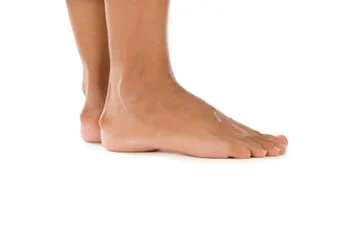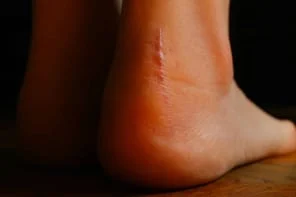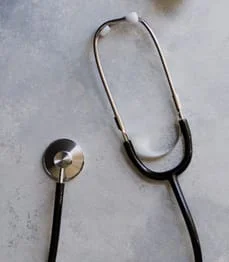Haglund’s Deformity
What Is Haglund’s Deformity?
Also known as the “pump bump”, Haglund’s deformity is a condition that causes the bony section of your heel—where the Achilles tendon is—to become enlarged or inflamed. Wearing shoes that put too much pressure on the back of the heel, which causes inflammation, most often causes Haglund’s deformity.
If left untreated, Haglund’s deformity can lead to bursitis—which is an inflammation of the fluid-filled sac that separates the tendon from the bone. When the heel becomes inflamed, it can actually calcify the heel bone and cause the bump to become more prominent. When this happens, pain becomes more noticeable, and basic foot function could be affected.
Causes Of Haglund’s Deformity

As its other name “pump bump” implies, the rigid backs of “pump-style” shoes usually cause Haglund’s deformity. These shoes create pressure that aggravates the growth during normal activities, like walking.
In addition to poor shoe choice, these factors can also contribute to the formation of Haglund’s deformity:
- Having a high-arched foot
- Having a tight Achilles tendon
- Poor walking mechanics
Haglund’s Deformity Symptoms

Most cases of Haglund’s deformity are very painful—especially in the area where the growth is located o the heel. Other common symptoms of Haglund’s deformity include:
- A noticeable bump on the back of the heel
- Severe pain in the heel
- Swelling in the heel
- Redness or tenderness near the inflamed area
Diagnosis And Treatment Options

Because its symptoms are so similar to those of other common foot conditions—like arthritis—Haglund’s deformity can be difficult to diagnose. Your podiatrist may be able to diagnose this condition based on the appearance of your heel—although some cases require further diagnostic and imaging tests to confirm the diagnosis.
Treating Haglund’s deformity involves relieving pressure from the heel bone. This can be accomplished surgically or non-surgically—the treatment depends on the severity of your symptoms. For mild to moderate Haglund’s deformity, the following non-surgical treatments may be performed:
- Shoe changes
- NSAID pain-relievers
- Soft-tissue massage
- Custom orthotics
- Heel pads or cushions
- Anti-inflammatory injections
If non-surgical options are ineffective, your podiatrist may recommend a surgical procedure to relieve pressure from the heel bone. This can be done by removing excess bone from the heel or smoothing existing bone. These procedures are very effective in relieving pressure from the bone and surrounding soft-tissues.
